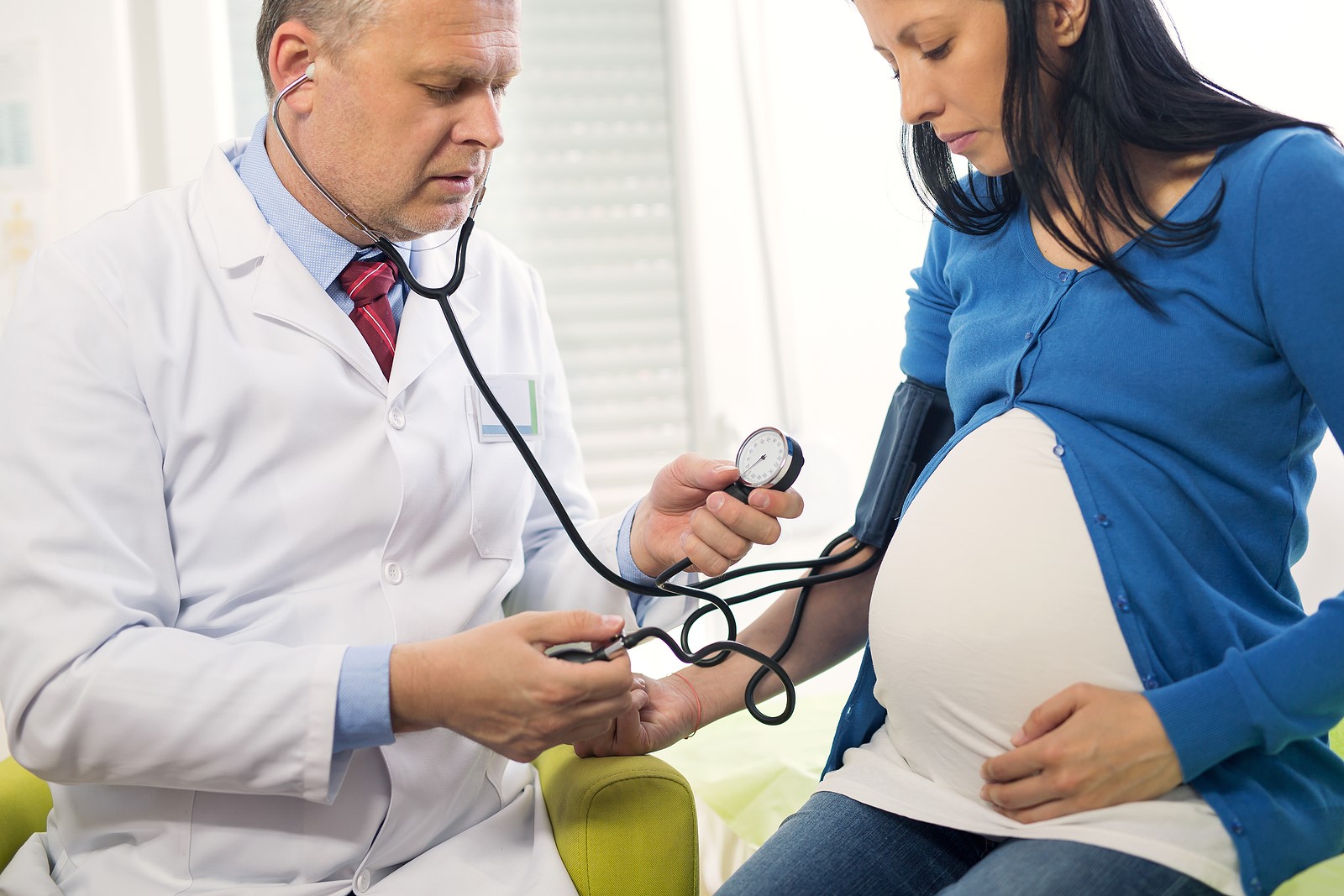
Pregnancy and motherhood are unforgettable experiences in a woman’s life. A woman’s body goes through massive changes to create a safe and nourishing environment for her child. However, each year thousands of women and babies get sick from preeclampsia. According to the Centers for Disease Control and Prevention (CDC), it happens in about 1 in 25 pregnancies in the United States. (CDC, 2021)
What is Preeclampsia?
Preeclampsia is persistent high blood pressure that develops during pregnancy or postpartum. It is often associated with high protein levels in the urine or decreased blood platelets. It could also lead to fluid in the lungs, trouble with the kidneys or liver, or seizures.
Preeclampsia generally develops during the third trimester and resolves within 48 hours of delivery. However, it can occur during pregnancy, delivery, and up to 6 weeks postpartum. (Preeclampsia Foundation)
Symptoms
It’s important to remember that the signs and symptoms of preeclampsia may go undetected for weeks or months. Preeclampsia can develop gradually, or it may even come on quite suddenly. One of the first signs of preeclampsia is a rise in blood pressure. Suppose the blood pressure exceeds 140/90 or higher when documented on two occasions, at least 4 hours apart. In that case, it is abnormal.
Some other signs and symptoms include severe headaches, excess protein in the urine or any additional kidney problems, upper abdominal pain, changes in vision like blurred vision or light sensitivity, nausea or vomiting, shortness of breath, etc.
Sometimes sudden weight gain and swelling or edema may also occur with preeclampsia. However, since these symptoms also occur in many normal pregnancies, they’re not considered a reliable sign of preeclampsia. (Mayo Clinic, 2020)
Causes and Risk Factors
The cause of preeclampsia is unknown, and numerous theories are being explored. However, some risk factors can increase the chances of preeclampsia. These include first pregnancy, multiple gestations or being pregnant with more than one baby, being over 35 years of age, personal or family history of preeclampsia, becoming pregnant using in vitro fertilization (IVF), having a history of diabetes, chronic high blood pressure, and kidney disease.
Complications
Preeclampsia is a serious condition. If left untreated, preeclampsia can be life-threatening for the mother and the baby. The more severe the preeclampsia and the earlier it occurs in the pregnancy, the greater are the risks for the mother and the baby.
Some of the complications include,
- Placental Abruption: This means breaking away of the placenta from the uterine wall, and severe abruption can cause heavy bleeding.
- HELLP (Hemolysis, Elevated Liver enzymes, and Low Platelets) Syndrome: It is considered a variant of preeclampsia. Its symptoms include nausea and vomiting, upper abdominal pain, headache, and shortness of breath.
- Organ Damage: This can damage the liver, kidneys, lungs, eyes, heart and may also cause brain injury or a stroke.
Treatment
During pregnancy, the recommended treatment for preeclampsia is delivery. If the pregnancy is at 37 weeks or later, the doctor may induce labor. If preeclampsia occurs before 37 weeks, the doctor will consider the health of the mother and the baby to decide the time of delivery.
In some cases, the doctor may give medications to help lower the blood pressure. The doctor may even advise getting admitted to the hospital for more thorough monitoring.
The management of preeclampsia depends on whether the condition is mild or severe. Some signs of severe preeclampsia include seizures, abdominal pain, changes in the baby’s heart rate, which indicates stress, fluid in the lungs, impaired liver or kidney function, etc. If there are any symptoms of severe preeclampsia, it’s critical to get immediate medical attention. (Herndon, 2021)
Prevention
Researchers continue to study ways for preeclampsia prevention, without any clear strategies emerging yet. The best way to help your doctor diagnose preeclampsia soon and prevent complications is by following consistent prenatal care.
Eating a balanced and healthy diet, taking prenatal vitamins with folic acid, and getting regular prenatal care checkups are vital to keeping the mother and the baby healthy.
It’s vital to contact the doctor if you notice any unusual signs or symptoms during the pregnancy and seek emergency care when your symptoms persist or worsen.
Works Cited
CDC. “High Blood Pressure during Pregnancy.” Centers for Disease Control and Prevention, Centers for Disease Control and Prevention, 6 May 2021,
www.cdc.gov/bloodpressure/pregnancy.htm.
Preeclampsia Foundation. “Preeclampsia – What Is Preeclampsia.” Preeclampsia Foundation – Saving Mothers and Babies from Preeclampsia,
www.preeclampsia.org/what-is-preeclampsia.
Mayo Clinic. “Preeclampsia.” Mayo Clinic, Mayo Foundation for Medical Education and Research, 19 Mar. 2020, www.mayoclinic.org/diseases-conditions/preeclampsia/symptoms-causes/syc-20355745.
Herndon, Jaime. “What Are the Causes and Symptoms of Preeclampsia?” Healthline, Healthline Media, 27 Oct. 2021, www.healthline.com/health/preeclampsia.





